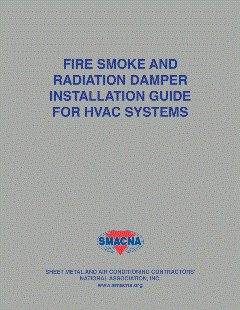
A fire alarm system featuring 1,000 addressable points provided needed flexibility to this hotel chain.
Staybridge Suites is a company going in the right direction. An all-suite hotel brand for ex-tended-stay guests looking for a residential-style hotel for business, relocation, or leisure, Staybridge boasts an impressive 10,655 rooms in 94 hotels. What’s more, the company has 11,226 rooms in the pipeline in the Americas, with another 230 rooms planned for Europe, Middle East, and Africa. So rapid is the company’s growth, it will reach its 100th hotel opening faster than any other brand in the upscale extended-stay market.
UNUSUAL INSTALLATION
One of the company’s most recent success stories is the Staybridge Suites-Cleveland East. Located just 20 minutes from downtown Cleveland, this three-floor facility offers 123 suites with a mix of single- and double-bedded rooms.Ironically, while the Staybridge Suites-Cleveland East, like the entire Staybridge franchise, is clearly headed in the right direction, its fire protection system was not - literally.
“The majority of fire protection systems are installed horizontally within a building’s struc-ture,” explained Dan Klag, owner and president of Cleveland-based Life Safety Systems, whose company helped design the Staybridge system along with engineering firm Thorson Baker. “Due to the nature of the hotel’s construction - the way the pre-cast concrete was poured, among other factors - we were unable to use horizontal conduits. So we designed and specified a fire alarm system somewhat out of the ordinary: instead of horizontal type rungs of cabling, we used vertical risers. These served as the backbone of the system’s piping.”
“Ultimately, this minimized labor and material costs and helped Staybridge realize signifi-cant cost savings.”
Not every fire protection system is flexible enough to accommodate such directional idio-syncrasies; the system Klag specified, however, more than fits the bill. His recommenda-tion was a system from Silent Knight, part of the Honeywell Life Safety group and a leading provider of industry-wide compatible fire alarm solutions for small and mid-size institutions as well as commercial sites.
At the heart of the system that Klag provided was the Farenhyt IFP-1000 Ana-log/Addressable Fire Alarm Control Panel (FACP). The basic IFP-1000 system, which has over 1,000 addressable points, has one signaling line circuit (SLC) that supports expansion of up to seven more SLC’s. The FACP also has a built-in, dual-line digital fire communicator and supports a variety of devices, including remote annunciators, serial/parallel printer interface (for printing system reports), and System Sensor Intelligent Device Protocol (IDP) or Hochiki devices. For added flexibility, the system can use standard wire - no shielded or twisted pairs are required.
Powering the system are eight RPS-1000 Intelligent Power Modules. The RPS-1000 adds 5.0 amps of power supports its own backup battery and monitors the AC power. The Flex-put circuits can be programmed as notification appliance circuits, continuous, resettable, or door holder power; or as conventional initiation circuits for two or four-wire smoke detectors and contact devices (i.e. pull stations). Some of the RPS-1000 devices house SLC cards, depending on where they are positioned in the vertical riser structure.
Because of the complexity of the project, Life Safety Systems has been involved in this project for a couple of years. Now that the installation is complete, Klag says that the sys-tem’s performance has pleased everyone connected with the project.
“The job came off very well, and the products are operating exactly as they are supposed to,” he said. “The local [Mayfield Heights] fire marshal has been especially happy with the system’s functionality. Most importantly, hotel management is satisfied.”
Despite their satisfaction, Staybridge representatives have requested certain modifications to the system - changes necessitated by Staybridge’s own stringent fire safety standards.
“At the time the system was being installed, Ohio code did not require smoke detection capabilities in the corridors of buildings equipped with sprinklers,” said Klag. “But it was re-quired by Staybridge in its standards manual. After negotiating with Staybridge, the owners decided to install it. Ultimately, they weren’t concerned with minimal code compliance; they wanted a level of protection that met their own needs.”
“Silent Knight made this a very simple procedure. To begin with, the changes were easily made because of the flexibility of the installation and the product itself. Plus, material was de-livered within days of order, and the installation and programming were completed within a week.”
Another revision was catalyzed by a visit from the State Fire Marshal once the project was completed. The Marshal came through and saw a few magnetic doors that had been added for fire protection of the lobby area. The Marshal requested that Staybridge put a beam-style smoke detection across the lobby area.
“Still, engineering the change has been relatively simple because of the system’s flexibility. Almost anything that is asked of us can be accomplished with the core system we have in place,” said Klag.
The owner’s satisfaction with the system has led to further work for Life Safety Systems – specifically, central station monitoring, inspection maintenance and service issues, as well as performing the hotel’s annual inspection under Ohio code. Klag is insistent that while his company’s expertise was instrumental in gaining the additional revenue, Silent Knight’s equipment played an integral role in sealing the deal.
“We put together a design that would trim installation cost and time, based on the vertical configuration,” he said. “But without a product that could accommodate this design - as well as a product that would help the owners achieve total code compliance - it would have all been for nothing.”
Thanks to the vertically positioned Silent Knight fire protection system, things are looking up for both Staybridge and Life Safety Systems. That’s a direction that makes everyone happy.ES







